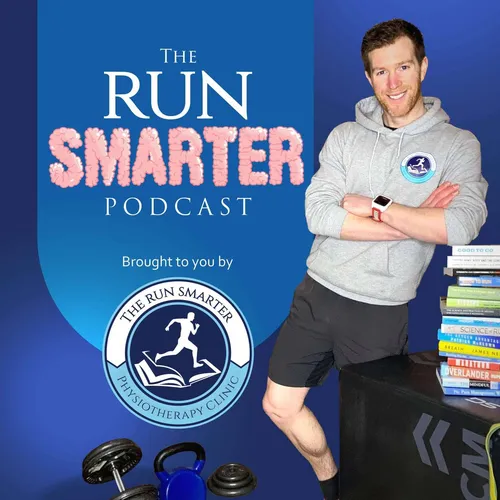Q&A: Long Run Fueling, Barefoot Running Risks, Shin Splint Management, and Tendon vs Muscle Rehab
- Author
- Brodie Sharpe
- Published
- Sun 15 Jun 2025
- Episode Link
- https://share.transistor.fm/s/1d1a4dcb
Learn more about Brodie's Research Database & AI Assistant 📄🔍
In this listener Q&A episode, Brodie tackles a wide range of questions from the Run Smarter community. From race-day fueling strategies and minimalist footwear to the nuances of tendon vs muscle rehab, this episode delivers practical, evidence-based advice to help you train smarter and reduce your injury risk.
❓ Questions Answered in This Episode:
- What’s the optimal fueling strategy for long runs and race day?
- How can I avoid calf cramps and “hitting the wall” after 32km?
- Is it okay to strength train the day before a speed session?
- What shoe or biomechanical adjustments can help with medial tibial stress syndrome?
- Are ketone supplements worth the investment for performance or recovery?
- Why do I only get sit-bone pain when running hills?
- How can I safely find my upper weekly mileage limit?
- What are the pros, cons, and research on barefoot running and Vibram shoes?
- Are youth runners more prone to injuries due to early specialization?
- How does tendon rehab differ from muscle rehab—and why do tendon injuries linger?
🧠 Key Lessons:
- Carb fueling: Aim for 60–90g of carbs per hour during long races; train your gut beforehand.
- Cramping prevention: Hydration must include electrolytes, not just water.
- Strength & speed: Don’t compromise quality—if you notice performance drop-offs, rearrange your training week.
- Barefoot shoes: They offer benefits but come with a very narrow margin for error and higher overload risk.
- Injury rehab: Tendon injuries often linger due to stress shielding and require different loading strategies than muscles.
✅ Practical Takeaways:
- Test fueling and hydration strategies during training, not on race day.
- Consider cadence, step width, and load distribution when dealing with shin splints.
- Use shoes as tools: rotate between minimalist and supportive footwear depending on recovery needs.
- Vary youth training loads and encourage multi-sport participation for injury prevention.
- Tendons need slow, progressive loading and may not respond to typical muscle rehab protocols.
💬 Quote to Remember:
“A part of training should be exploring your limits and learning from them—just don’t wait until injury forces the lesson.”For MORE Run Smarter Resources 🏃♂️📚
- Including Free Injury Prevention Courses 🩹🎓
- The Run Smarter Book 📖
- Access to Research Papers 📄🔍
- & Ways to Work with Brodie 🤝👟
👉 CLICK HERE! 🎉✨
